The Romanticism Art Movement focused on fantasy or a romanticised version of the world. Conversely, the Realism Art Movement was just the opposite. Artists of the Realism Art Movement were all about “keepin’ it real.” If the European skies were dreary with factory smoke from the Industrial Revolution, then that is just how the artist would paint it. If the muse had an unbecoming facial feature, the artist would surely not hide it. Realism is the art movement that shows people the real Europe of the 19th century.
What type of art was created during the Realism art movement?
Painting and literature were artworks of the Realist art movement.
Realism art was created and popular during which years?
Realism began and was popularised from 1840 to the late 19th century.
Where was Realism art made and popularised?
Realism artworks were painted in France and other parts of Europe.
What medium (media) and tools were used to make Realism Art?
Oil on canvas and gouache were among the preferred media for Realism artworks.
Who are some famous Realism artists and artworks?
The Stone Breakers by Gustave Courbet
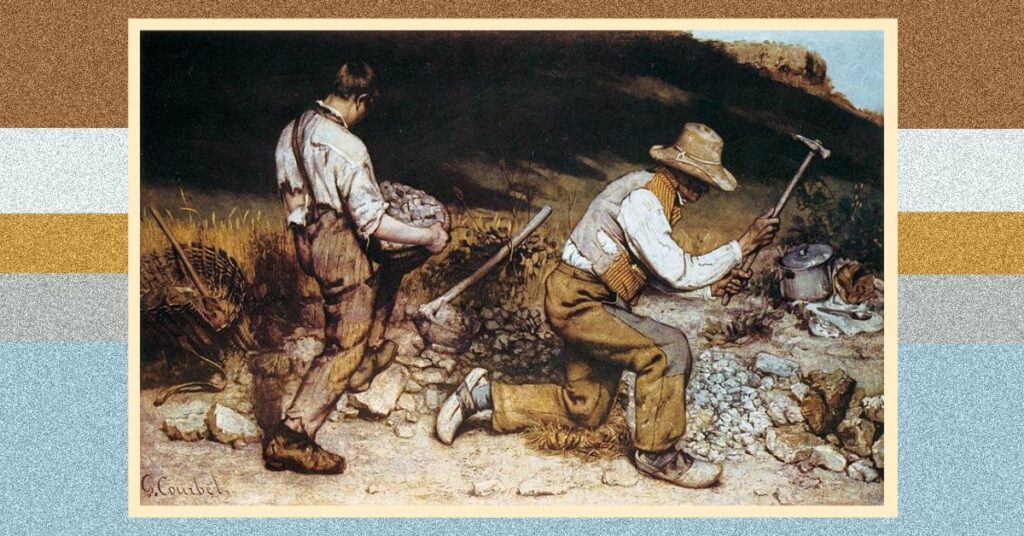
Yawning Apprentice by Mihály Munkácsy
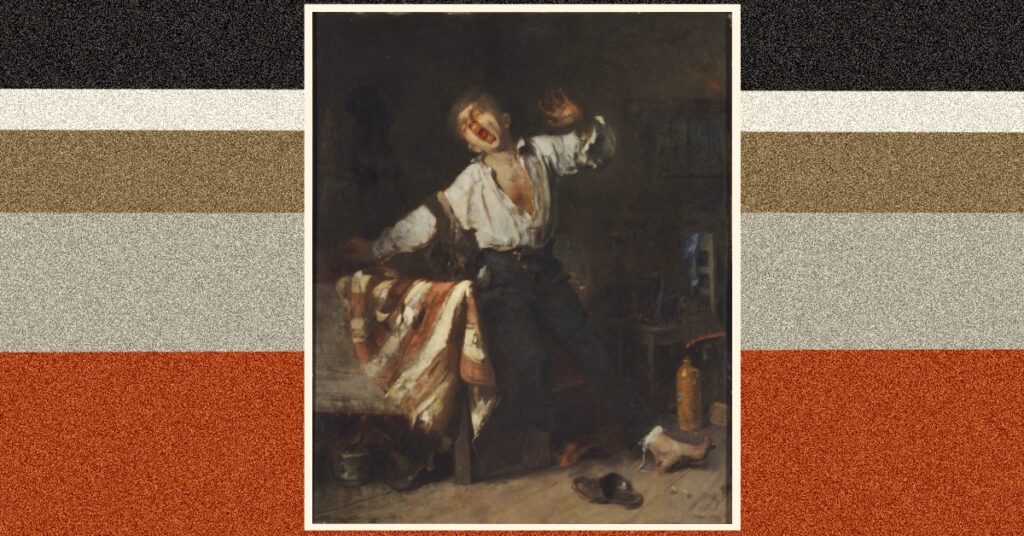
Whistler’s Mother by James Abbott McNeill Whistler
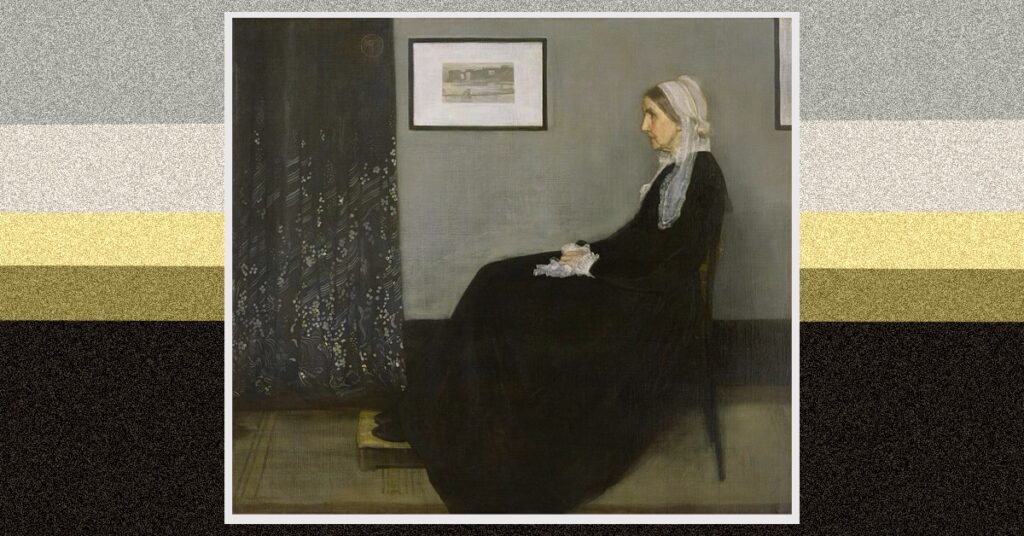
Which art movement(s) came before the Realism movement?
Romanticism Art Movement came before Realism.
Which art movement(s) came after the Realism movement?
Impressionism and Hyper-realism Art Movements came after Realism.
Top 8 Artworks of the Realism Art Movement
The Realism art movement, which emerged in the mid-19th century, sought to depict the everyday lives of ordinary people with unflinching honesty. It was a reaction against the idealised and romanticised portrayals of life in art, offering a more candid and sometimes even gritty representation of reality. In this article, we’ll explore famous paintings of the Realism movement that continue to captivate viewers with their authenticity and attention to detail.
The Stone Breakers by Gustave Courbet

Gustave Courbet’s “The Stone Breakers” (1849) is a poignant portrayal of the hardship faced by the working class. The painting features two labourers, one young and the other older people, engaged in the gruelling task of breaking stones. Courbet shows his commitment to depicting the lives of ordinary people without idealisation in his work.
Courbet’s choice of subjects for “The Stone Breakers” was influenced by his observations of rural labourers. He wanted to capture the dignity and struggle of the working class, and he sought models for the painting in his hometown of Ornans. The young man depicted in the painting was actually a farm boy, and the older man was a retired soldier.
The Gleaners by Jean-François Millet
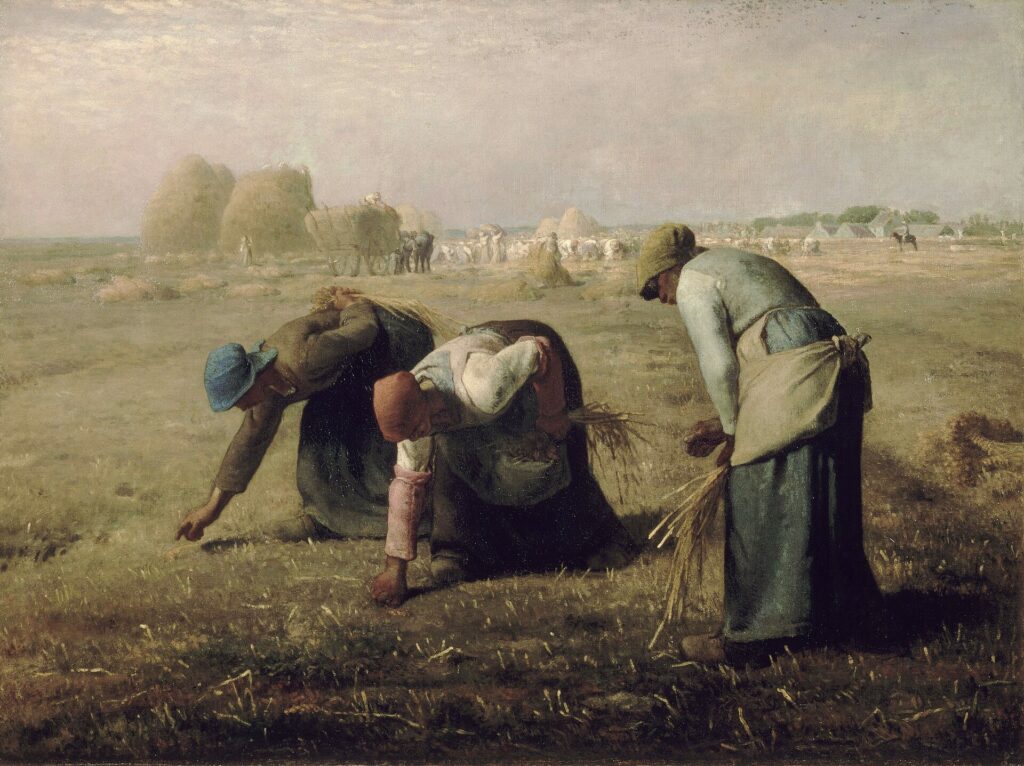
Jean-François Millet’s “The Gleaners” (1857) is a stirring representation of rural poverty and the toil of women in the fields. The painting shows three peasant women bent over in the act of gleaning, collecting leftover crops after the harvest. Millet’s portrayal of their hunched figures and the vast, barren landscape highlights the harshness of their labour.
Millet was deeply connected to the rural life he depicted in “The Gleaners.” He, himself came from a peasant background and understood the challenges of agricultural labour. He often observed rural scenes and spoke with local women who worked in the fields to ensure the authenticity of his portrayal.
A Burial at Ornans by Gustave Courbet
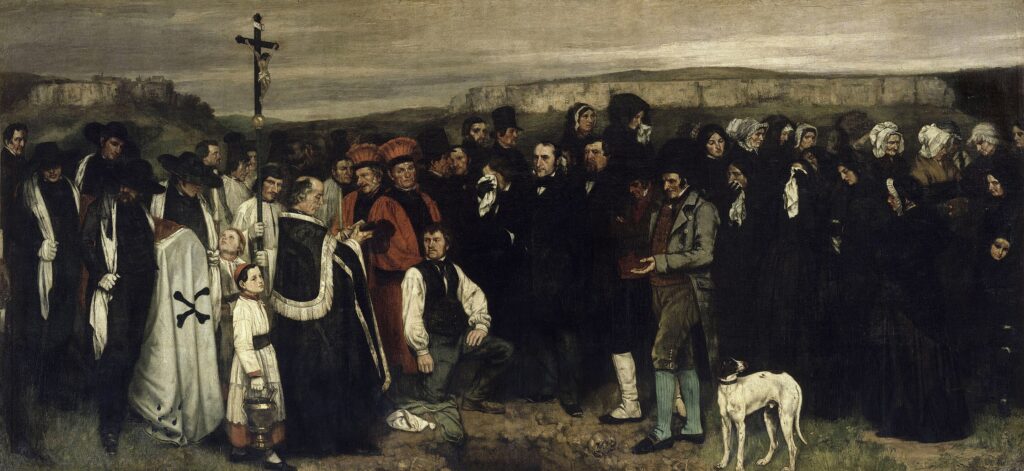
Gustave Courbet’s “A Burial at Ornans” (1850) is a monumental painting that depicts a funeral procession in his hometown of Ornans, France. The artwork captures the solemnity and ordinariness of the occasion, with figures in mourning attire participating in the procession.
“A Burial at Ornans” was met with mixed reviews when it was first exhibited at the Paris Salon. The art establishment was uncomfortable with Courbet’s departure from traditional artistic subjects. Courbet’s decision to depict a provincial funeral rather than a grand historical or mythological scene was seen as a challenge to the established norms in the creative sphere.
The Horse Fair by Rosa Bonheur
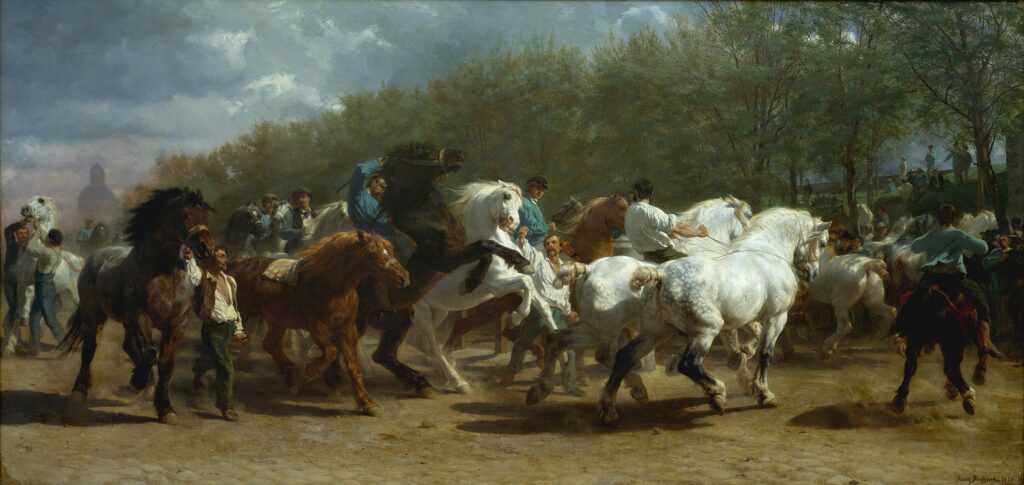
Rosa Bonheur’s “The Horse Fair” (1853) is a remarkable depiction of the horse market in Paris. The painting captures the bustling activity of the market, where horses are being showcased and sold. Bonheur’s attention to detail and the accuracy of the horses’ anatomy and movement are noteworthy. imagine capturing still life with animals who have trouble staying still.
Rosa Bonheur was known for her unconventional lifestyle. She obtained special permission from the French government to dress in men’s clothing to facilitate her work. Her dedication to accuracy in portraying horses led her to spend extensive time at the horse market, observing and sketching the animals. “The Horse Fair” was celebrated for its realism and became an international sensation.
The Potato Eaters by Vincent van Gogh
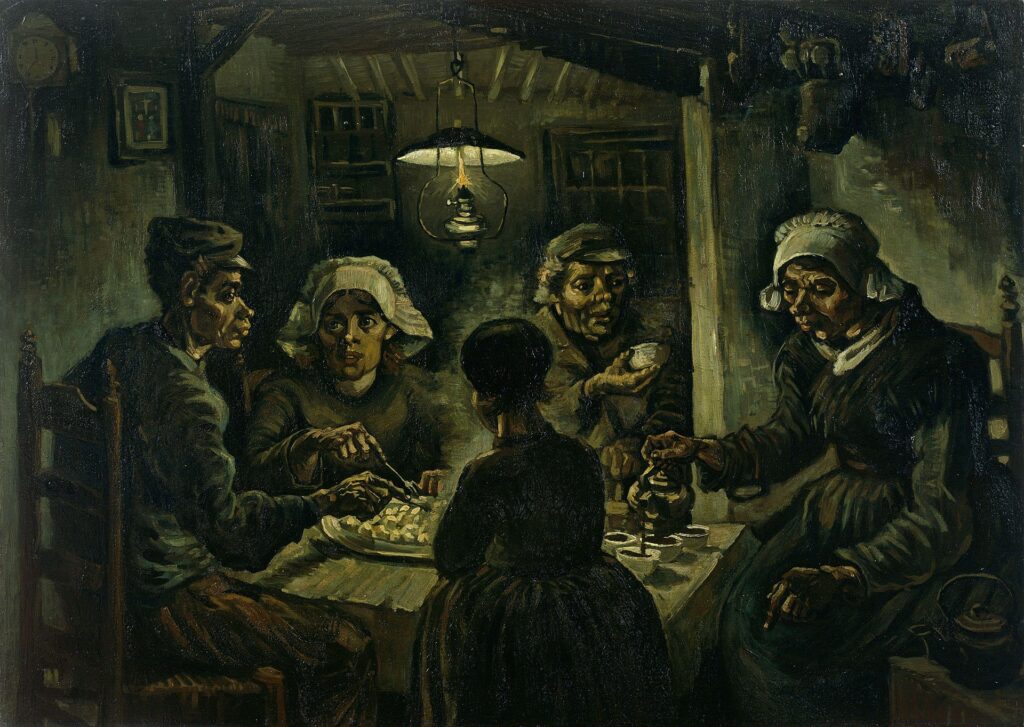
Vincent van Gogh’s “The Potato Eaters” (1885) is a stark portrayal of a family of peasants sharing a meal. Van Gogh, who often depicted the lives of ordinary, working-class individuals, used this painting to convey the harsh reality of rural life in the Netherlands.
Van Gogh was not well-received as an artist during his lifetime, and “The Potato Eaters” was no exception. Critics found the painting too dark and gloomy. Van Gogh, however, considered it one of his most important works and believed that it accurately represented the lives of the peasants he admired.
The Gare Saint-Lazare by Claude Monet

Claude Monet’s “The Gare Saint-Lazare” (1877) captures the bustling activity of the Gare Saint-Lazare, one of Paris’s major train stations. The painting showcases the steam and smoke emanating from the locomotives, the industrialisation of the railway, and the modern urban experience of the time.
Monet’s choice to paint the Gare Saint-Lazare was influenced by his fascination with the effects of light, steam, and modernity. He was interested in capturing the transient and ever-changing atmosphere of the train station, which was a symbol of the rapid changes occurring in Paris during the late 19th century.
The Gross Clinic by Thomas Eakins
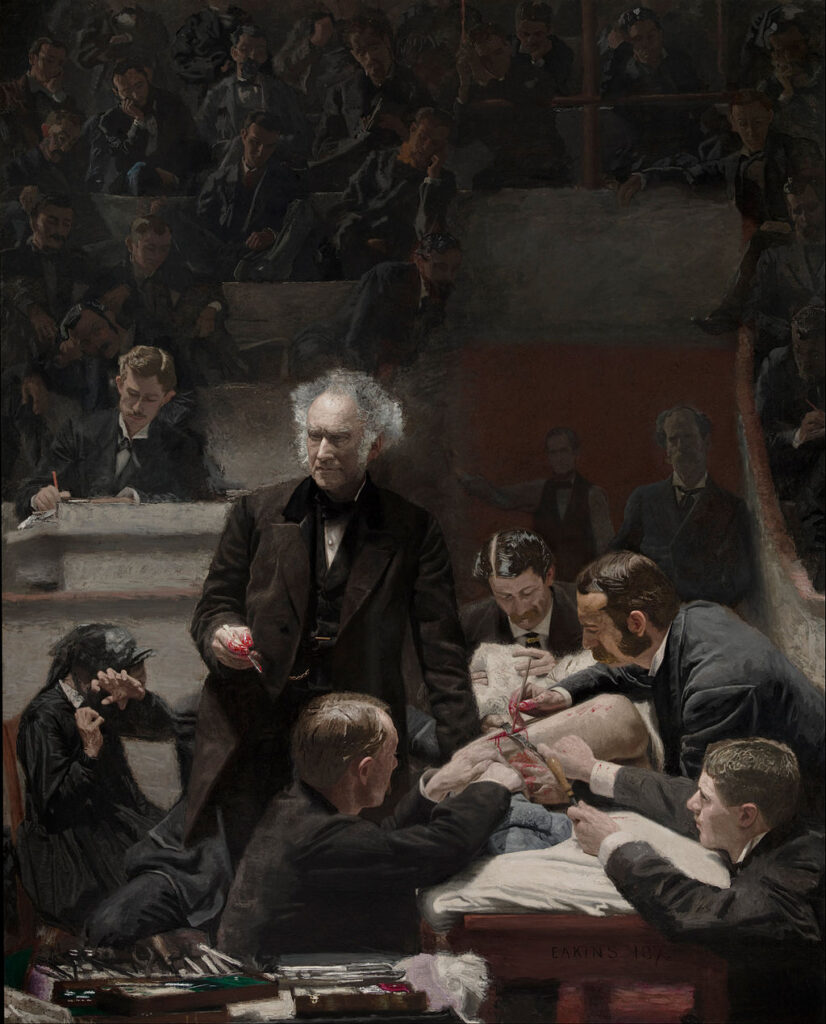
Thomas Eakins’ “The Gross Clinic” (1875) is a compelling depiction of Dr. Samuel D. Gross, a prominent American surgeon, performing a surgical procedure. The painting offers a detailed and graphic view of a medical surgery, complete with blood and exposed tissue.
“The Gross Clinic” was met with a mix of admiration and shock when it was first displayed. The realistic portrayal of surgery and the exposure of blood and the patient’s leg was considered highly unconventional for the time. Eakins’ determination to accurately portray the surgical procedure was based on his commitment to realism in art and his interest in the advancements of medical science.
The Railway by Édouard Manet
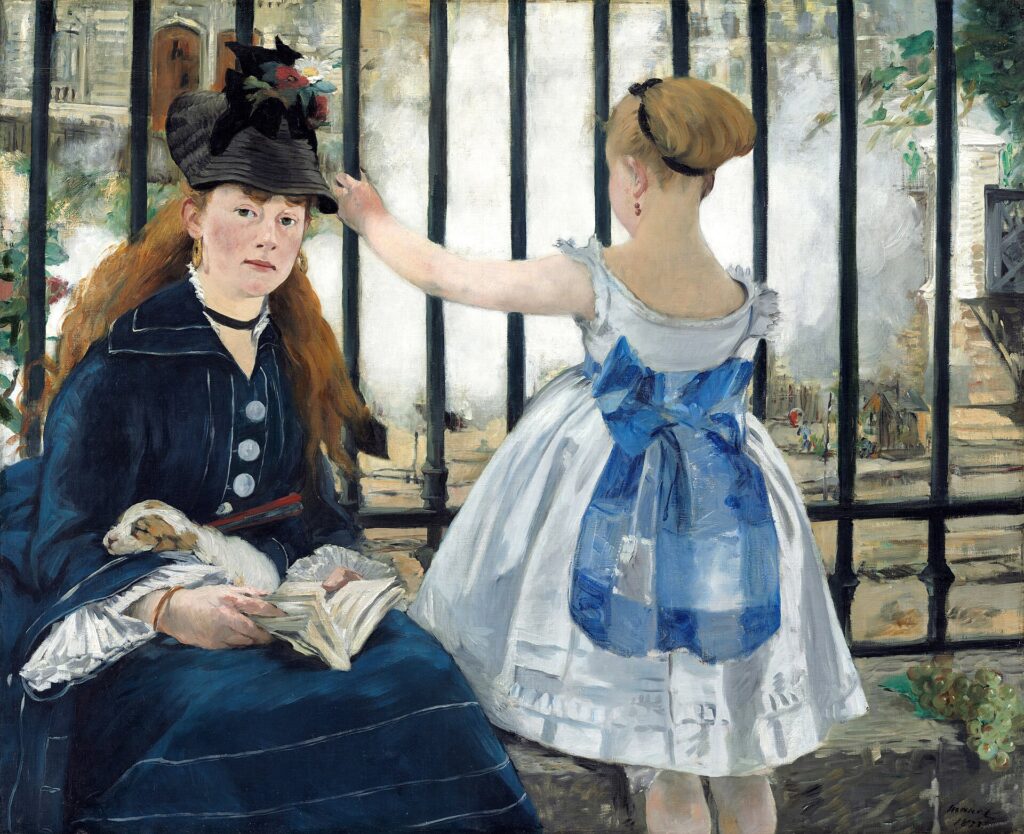
Édouard Manet’s “The Railway” (1873) is a subtle yet compelling depiction of a mother and child at a train station. The painting captures a quiet moment as the mother and child sit together, separated from the viewer by a railing. The passing train in the background represents how we are spectators in the rapid changes of modernity.
Manet’s fascination with depicting modern life and the impact of new technologies is evident in “The Railway.” He often painted scenes from the contemporary Parisian experience, and this painting is a testament to his ability to capture both the ordinary and the transformational aspects of urban life.
The Realism art movement brought a profound shift in the world of art by prioritising the authentic depiction of everyday life, the working class, and the challenges faced by ordinary people. These famous paintings of the Realism movement reveal the commitment of artists to realism, their exploration of the complexities of human existence, and their willingness to make unconventional art. These artworks continue to captivate viewers with their honesty and attention to detail, serving as powerful testaments to the enduring impact of Realism in the realm of art.
*Images from Wiki Commons

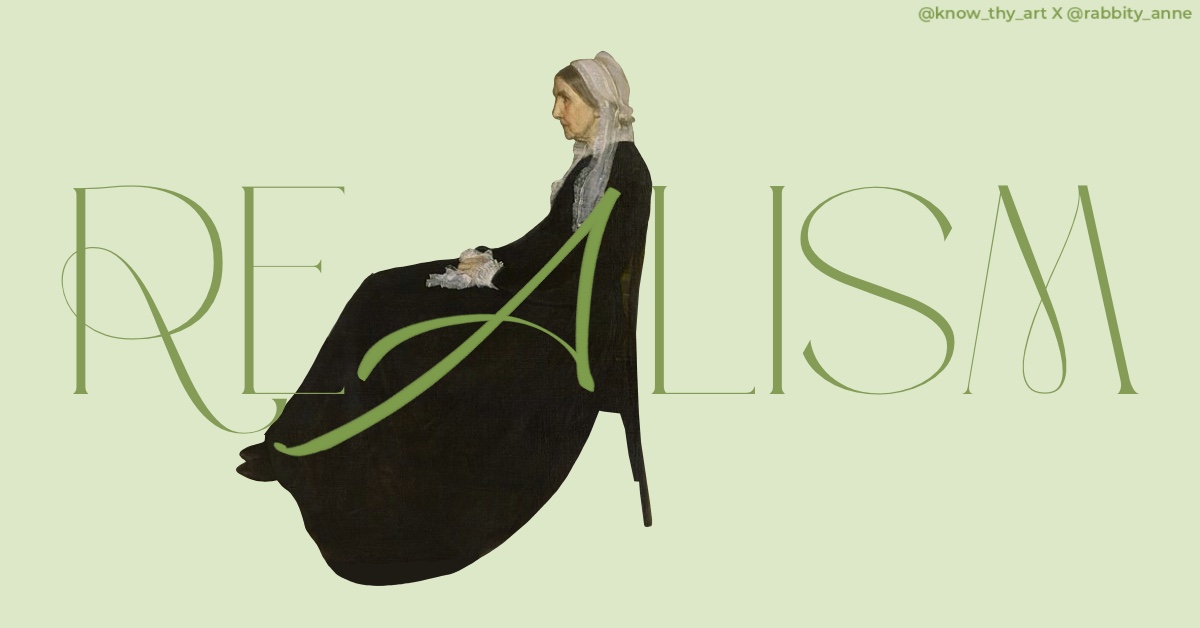





0 Comments